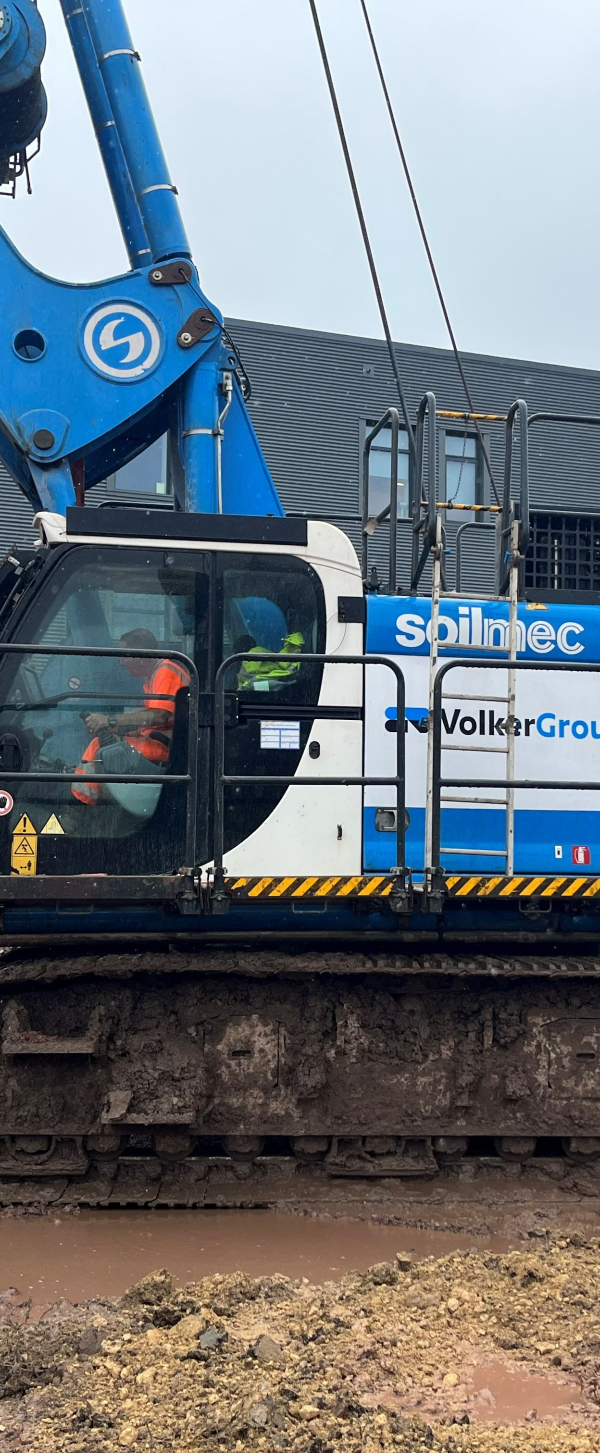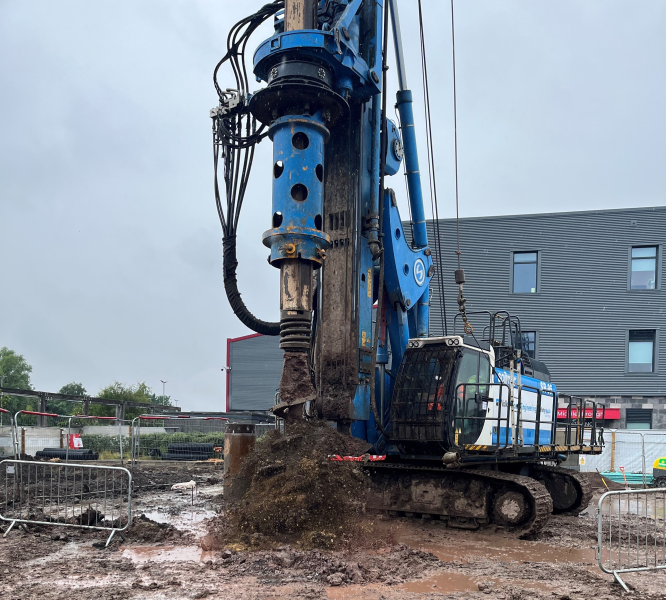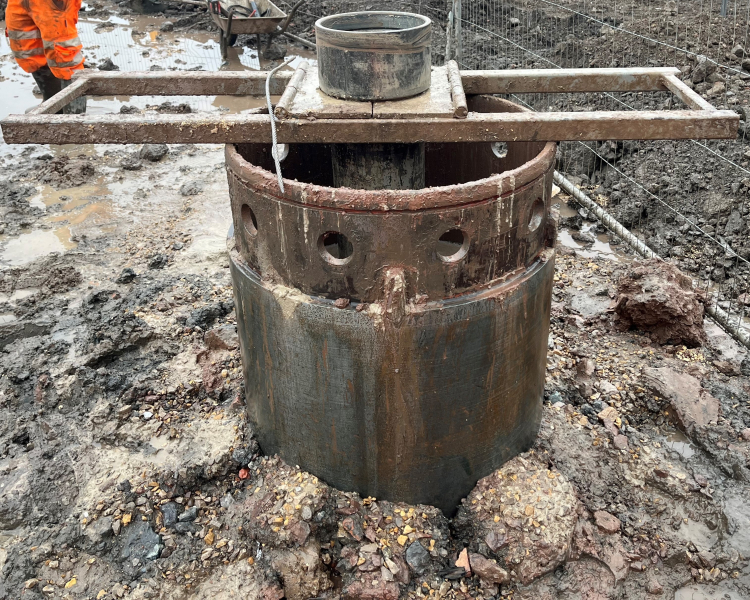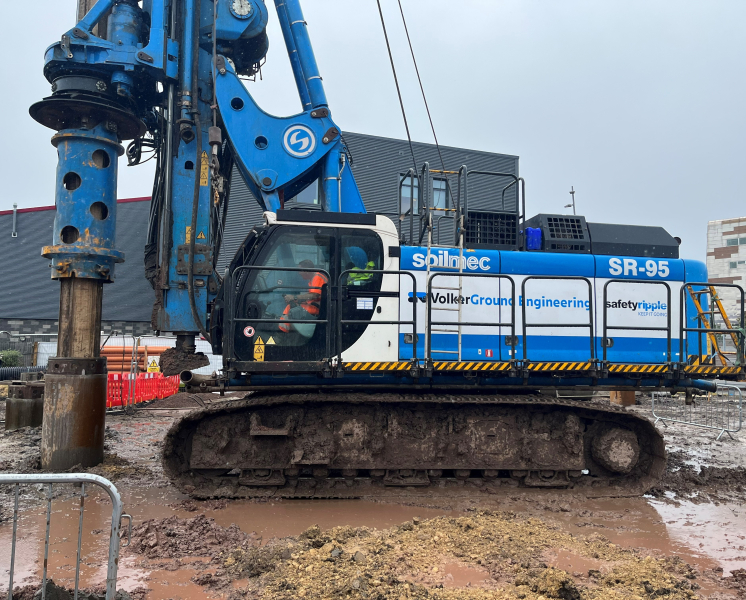
Middlesbrough College
This project involved the construction of a new engineering workshop at Middlesbrough College. The site, partially located on a backfilled dock, posed unique geotechnical challenges due to the deep infill ground. Beneath it lay made ground, tidal flats, and Mercia Mudstone, necessitating a tailored piling solution to mitigate potential risks.
The site’s infilled dock area posed significant risks, due to the potential of timber obstructions and the presence of an existing dock wall.
During the pre-construction phase, VolkerGround Engineering collaborated with Morgan Sindall and Billinghurst George and Partners (BGP), to develop a suitable piling solution which was able to reduce the potential impact of the historic dock fill. Initially, the proposal specified Continuous Flight Auger (CFA) piling for all pile positions, however it was deemed appropriate to adopt a mix of CFA and rotary bored piles.
Prior to the piling works commencing, VolkerGround Engineering carried out probing works to evaluate each pile position, identify the infilled dock area, measure the depth of the made ground and identify the likelihood of obstructions being present to ensure that suitable techniques were adopted in the necessary positions. Results confirmed obstructions within the infilled dock and unimpeded conditions outside the dock area. To address the challenges relating to delivery of the works, the project utilised VolkerGround Engineering’s SR95 dual-purpose piling rig, capable of both CFA and rotary piling techniques. This was supported by VolkerGround Engineering’s TM22 leader rig for the initial probing works on 93 pile positions.
VolkerGround Engineering installed 41 rotary piles, each 750mm in diameter, using heavy segmental temporary casing with 650mm diameter drilling tools. This method was applied in the infilled dock area to manage obstruction risk and to core-through the obstructions where they were present.
We constructed 52, 600mm diameter piles on the outside of the infilled dock area using a CFA technique.
During piling operations near the existing college building, noise and vibrations were continuously monitored to minimise potential impacts on the structure. Through engagement with Morgan Sindall, BGP and the client, the team was able to optimise the design. The optimised design led to a reduction in uncertainty within the ground and reduced material usage, contributing to a lower carbon footprint for the piling works.







